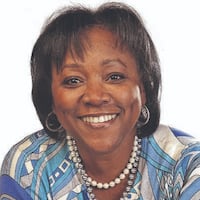Dr. Alvin Blount was the first African-American to serve in an integrated MASH unit during the Korean War. Dr. Clinton Battle was just 29 when he delivered conjoined twins without the use of anesthesia at a rural Mississippi home. And Dr. Vance Marchbanks designed an oxygen mask that became standard equipment in aviation and aerospace.
If you haven’t heard of them, there’s a reason for that.
Like so many African-Americans before them, black physicians and their contributions are often missing from the annals of American history.
That omission has never quite sat well with Dr. Ray Matthews and other members of the Morehouse Trauma Surgical Critical Care Division.
And so about five years ago, after the men began sharing their frustrations with history, the team decided they’d make things right. They began researching and recounting the role African-Americans have played in our country’s medical and military history.
First, the role Blount played in the mobile Army surgical hospital during the Korean conflict. Then Battle and more recently Marchbanks.
It wasn’t exactly a novel idea. In many ways, it was born out of the same frustration with history and our educational system that gave birth to Black History Month.
RELATED: Why Carter G. Woodson is important to Black History Month
Even though African-Americans had made significant contributions not only in medicine, but in technology, science, engineering, and the Industrial Revolution, those were often missing from school textbooks and classrooms. In many cases, that’s still true.
If you didn’t quite understand the excitement generated by the box office hit “Hidden Figures” or its predecessor, “Something the Lord Made,” this may help.
Before them, who’d ever heard of Vivien Thomas, the surgical technician who developed the procedures used to treat blue baby syndrome, or Katherine Johnson, Dorothy Vaughan or Mary Jackson, the African-American women who were some of the brains behind astronaut John Glenn’s launch into orbit?
Credit: The Atlanta Journal-Constitution
Credit: The Atlanta Journal-Constitution
I hadn’t. Matthews said he hadn’t.
But he knew about Clinton Battle because those conjoined twins were Matthews’ older sisters, born at a time when black physicians often weren’t allowed to practice at local hospitals.
Battle, a graduate of Meharry Medical College, was a former classmate of Matthews’ father, John, and visited the family’s home at least twice a year.
RELATED: Madame President
When it came time for his mother to deliver in 1955, Matthews said the young surgeon arrived with only a stethoscope.
“That my mom and sisters survived was a remarkable feat,” he said. “I’m still trying to figure out how he delivered those kids and no one of them died. He was a brilliant man but never got credit for what he did.”
That always bothered Matthews.
Battle, who died in 1994, is the subject of one of two manuscripts Matthews researched and wrote. Both were published in the Global Journal of Medical and Clinical Case Reports.
Marchbanks is credited with not only developing an oxygen delivery mask that helped to advance aviation medicine but monitoring astronaut John Glenn during his historic space flight.
Though not by his real name, most people are at least familiar with Dr. Alvin Blount, the first black chief of surgery of an integrated MASH unit, the subject of the popular and long-running television series “M.A.S.H.”
First introduced in a novel by the same name, neurosurgeon Oliver Harmon “Spearchucker” Jones figured prominently during the first season, but the character was subsequently written out of the series.
The reason?
No African-American surgeons supposedly served during the Korean War.
RELATED: 'Pioneers' helped break Marines' color barrier
Blount not only served, but he was awarded the Incident Participation medal (later known as the Korean War Service medal) for his meritorious service as a field surgeon in Korea, according to Dr. Kenneth L. Wilson, who profiled the physician in an article published in the Journal of the National Medical Association.
Blount, who retired from a full surgical practice in 1994, died last year. He was 94.
Wilson’s piece, published in 2012, was the first of a series of articles about African-American physicians’ contributions to medicine and the military.
Wilson, who left Morehouse four years ago to become deputy director of pediatric trauma at Hurley Medical Center in Flint, Mich., and is now deputy director of trauma at the University of Chicago, said he hopes the series inspires renewed interest in correcting the failings of history to recognize African-Americans’ contributions defending our nation.
“These men not only practiced during an unfavorable period in our country’s history,” he said, “but the enforcement of being Southern and subjugated to Jim Crow makes what they accomplished that much more incredible.”
Matthews said he hopes the profiles will eventually be published in a book or featured in a television documentary.
“This is our way of recognizing people who made major contributions but have not gotten the credit that they deserve,” he said. “We’re correcting history and adding to the enrichment of the country.”
Find Gracie on Facebook (www.facebook.com/graciestaplesajc/) and Twitter (@GStaples_AJC) or email her at gstaples@ajc.com.
About the Author
Keep Reading
The Latest
Featured




